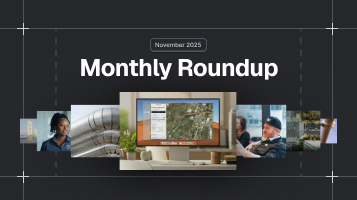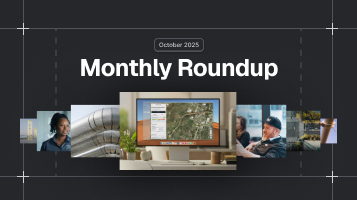The Complex and Interesting History of Utility Mapping
Written by

Published on
November 7, 2022


Table of contents
Utility mapping helps you determine the location of subsurface utilities during construction so risks are mitigated and construction projects go smoothly. Subsurface utilities include power cables, poles, gas and fuel pipelines, telecommunication cables, and, most importantly, water and sewerage infrastructure.
While futuristic applications enabled by artificial intelligence (AI) are available today, things were not always easy. Multiple delayed and abandoned projects have been due to damages to utilities due to faulty maps and incomplete information. However, the evolution of modern utility mapping is a long and complex story. It goes back to prehistoric times, and traverses through ancient, medieval and modern eras.
This article looks at the complex and interesting history of utility maps. It evaluates how rudimentary maps have evolved into the futuristic applications of today that savvy engineering, procurement, and construction (EPC) contractors and project builders use.
Why do we need utility maps?
Utility maps are necessary to mitigate risks and ensure projects get completed in time within the budget allocated. They pinpoint the location of underground utilities so that you can plan projects without damaging subsurface infrastructure. While modern utility maps use technologies such as remote sensing and artificial intelligence to non-intrusively detect subsurface utilities, things were not so straightforward in the past. Let us take a look at how utility mapping evolved from its modest beginnings.
A brief history of utility maps during the prehistoric times
Human history is complex, and technology, as we know it today, evolved from unassuming beginnings. You might be surprised to learn that the first culture to create and use utility maps was probably the aboriginal people of Australia. Aboriginal cave art in the form of dot paintings dating back to 30,000 years ago depicts signs and symbols representing rivers, watering holes, traveling tracks, places to rest and camp, and even sand hills and windbreaks.
If you have ever visited Australia, you'll know that the Outback is a dangerous place to be without a map. Although not exactly the kind of maps that we imagine today, these dot paintings helped the Aboriginal people to traverse the vast continent that Australia is. These rudimentary maps helped them to locate water bodies, and to return to communities after long periods of hunting. This is probably how the Aboriginal people dealt with a rather harsh environment.
Utility mapping in the ancient world
People took sewer lines and plumbing very seriously in ancient Europe and Asia. The Indus River Valley civilization in South Asia had a sewer system that was quite advanced. As early as the 3rd millennium BC, the Great Bath was built in Mohenjo-Daro. Archaeologists have uncovered detailed maps of how workers drained the water out of these baths, where priests and other nobles took their baths.
It wouldn't be an exaggeration to state that the Indus Valley Civilisation was one of the first examples of water supply and sanitation. Cities in the Indus Valley Civilisation, such as Harappa, Mohenjo-Daro, and Dholavira (in the present-day Indian state of Gujarat), had drainage channels, street ducts, and even rainwater harvesting. Brick drains were connected to houses where people used private bathrooms and toilets. Laborers used rudimentary maps to uncover holes and repair clogged drains. Constructions took place very carefully.
Similarly, the Romans began using lead pipes and concrete sewer systems in 200 BC. Sewerage was built by the Etruscans way back in 500 BC. The Romans and the Greeks maintained maps of sewer lines which helped them to repair clogged drains and ensure smooth plumbing.
History of modern utility mapping
The history of modern utility maps goes back to 1831, when Michael Faraday discovered electromagnetic induction. During the 1910s, electromagnetic technology came to be used to locate underground cables. Some of the devices were very rudimentary but helped workers to find utility lines by listening to induction sounds through contraptions made from wooden trusses and coils.
In the US, streets were wider compared to Europe, and power cables were overhead. As a result, utility locators made a much later entry. The Sharman Main Finder was a utility locator that helped users locate cables and pipes. In parallel, the Germans worked on high-powered locators with a lower frequency to find pipes and cables in narrower streets. This invention, much like the dot paintings of the Aboriginals, was also driven by necessity.
Using modern technologies to map subsurface utilities
Dr. Gerhard Fisher from California patented what came to resemble modern utility locators and started his own company in 1931. He used an aircraft radio detection finder to invent the Metallascope — the pioneering underground cable and pipe locating device. The Metallascope was so popular and successful that it remained in use until 2006 when First Texas Holdings eventually acquired it.
Around 1964, Bell Laboratories discovered that twin sensing aerial antennae help measure and detect the depth of targeted cables. The organization hired the Western Electric Company to manufacture a "Depthometer." Using two antennae helped locate utilities with more precision. They provided construction workers and contractors with a clearer picture and automatically enabled access to depth information. Although the Depthometer became the gold standard for pinpointing subsurface utilities and constructing with confidence, it was not sensitive enough to detect cables that overlapped.
It is important to note that in 1978, Electrolocation Limited, based in Bristol, England, later developed a twin aerial system to help locate subsurface utilities on its own. This company was later rebranded as Radiodetection Limited.
Electronic circuitry and the Internet revolutionize utility mapping
Further development took place when miniaturized electronic circuitry came into existence. This was a crucial period of evolution for utility mapping as it allowed manufacturing of smaller and lighter utility locators. The age of the Internet has ushered in the proliferation of a complex network of subsurface infrastructure. GPRS and GPS have further allowed electromagnetic scanning tools to evolve. They are still in use and help project managers locate subsurface utilities in construction areas.
Modern utility mapping solutions have helped to detect and locate multiple lines simultaneously. Multi-surface scanning technology, too, has helped develop tools that see utilities underwater, asphalt, and concrete.
Modern utility mapping tools are advanced and effective
In recent years, artificial intelligence (AI), machine learning (ML), and remote sensing have helped utility mapping solutions to detect subsurface infrastructure in a non-intrusive manner. They help pinpoint the location of both known and unknown utilities, thus mitigating several risks and reducing the responsibilities of contractors.
There are multiple benefits to using modern utility mapping solutions. Advanced mapping tools such as 4M Analytics's Utility Mapping help you construct confidently. These utility maps provide up-to-date GIS maps of subsurface utilities. They allow you to plan your project peacefully and ensure that you deliver on time within the budget. 4M's utility mapping solution provides complete coverage thanks to satellite imagery, comprehensive record search, and computer vision.
- Eliminate utility conflicts and mitigating legal ramifications
- Prevent accidental damages and expensive repair works that need to be undertaken
- Manage your expenses from the outset and ensure that you remain within your budget
- Helps you manage both current and future projects
- Identify undetected utilities by conventional mapping solutions such as 811, and detect abandoned utilities.
Legal requirements which necessitate utility mapping solutions
Before undertaking any ground works, it is essential to locate subsurface utilities. This is a legal requirement in most countries, including the US. For example, in Texas, the law requires you to contact 811 before you begin to dig. Once the 811 responder understands your digging project, they will contact public utilities in the concerned area.
Technicians and workers will visit the site and mark the ground where they have sufficient information that utility lines lie under the surface. These markings are valid only for 30 days. If you cannot start digging before this, you will have to "Call Before You Dig," also known as "Dig Safe" in the New England region.
Although calling 811 allows you to comply with legal regulations, their markings are insufficient to detect abandoned and new pipelines, subsurface utilities managed by third-party service providers, and mainstream utilities that are still not detectable to 811 technicians. In short, 811 is not a reliable source of information, although it is a legal requirement.
Utility mapping technology has come a long way.
We humans have come a long way from plotting dots to locate rivers and waterbodies to using GPS, radar technology, and artificial intelligence to detect complex networks of subsurface utilities. Although the journey has been complex and long, utility maps have existed from time immemorial.
Thankfully, modern technology helps you detect underground pipelines and other utilities before beginning any construction project. This helps you to design your project thoughtfully and start your construction project without hurdles. Most importantly, advanced utility mapping products such as 4M Analytics' solutions help eliminate safety risks to communities that live in and around construction projects. They also ensure workers' safety and help you avoid legal troubles that may arise due to damages to utility lines.
To learn more about how utility mapping solutions can help you build with confidence, contact us today .
Recent blog posts

Our Newsletter
Join 7k infrastructure professionals
Get monthly insights on ways to build smarter, faster and safer with Utility AI.



.avif)

